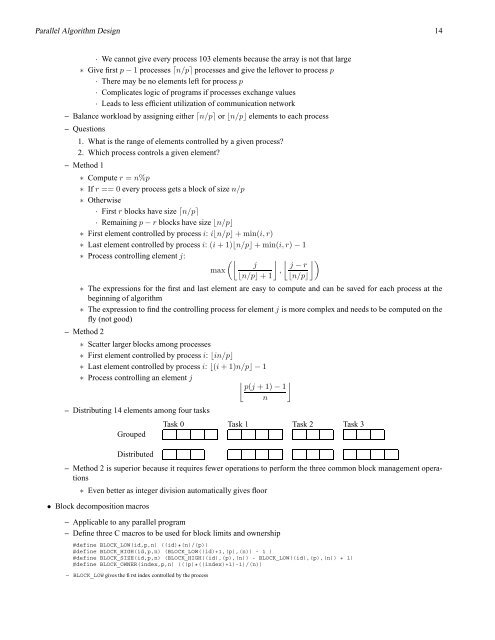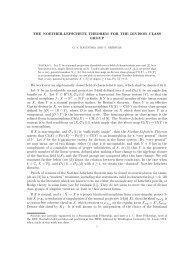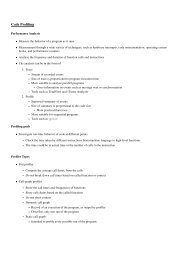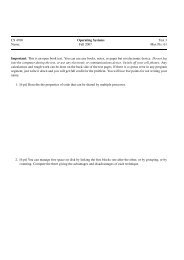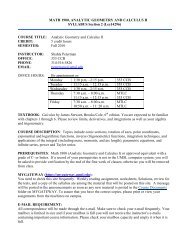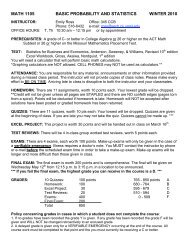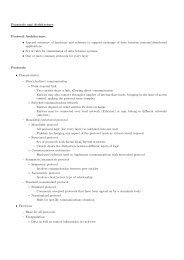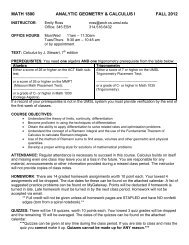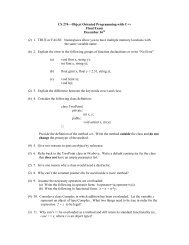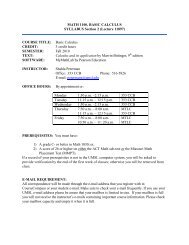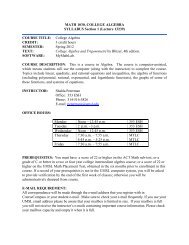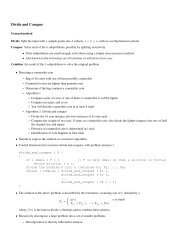Parallel Algorithm Design
Parallel Algorithm Design
Parallel Algorithm Design
You also want an ePaper? Increase the reach of your titles
YUMPU automatically turns print PDFs into web optimized ePapers that Google loves.
<strong>Parallel</strong> <strong>Algorithm</strong> <strong>Design</strong> 14· We cannot give every process 103 elements because the array is not that large∗ Give first p − 1 processes ⌈n/p⌉ processes and give the leftover to process p· There may be no elements left for process p· Complicates logic of programs if processes exchange values· Leads to less efficient utilization of communication network– Balance workload by assigning either ⌈n/p⌉ or ⌊n/p⌋ elements to each process– Questions1. What is the range of elements controlled by a given process?2. Which process controls a given element?– Method 1∗ Compute r = n%p∗ If r == 0 every process gets a block of size n/p∗ Otherwise· First r blocks have size ⌈n/p⌉· Remaining p − r blocks have size ⌊n/p⌋∗ First element controlled by process i: i⌊n/p⌋ + min(i, r)∗ Last element controlled by process i: (i + 1)⌊n/p⌋ + min(i, r) − 1∗ Process controlling element j:(⌊maxj⌊n/p⌋ + 1⌋ ⌊ ⌋) j − r,⌊n/p⌋∗ The expressions for the first and last element are easy to compute and can be saved for each process at thebeginning of algorithm∗ The expression to find the controlling process for element j is more complex and needs to be computed on thefly (not good)– Method 2∗ Scatter larger blocks among processes∗ First element controlled by process i: ⌊in/p⌋∗ Last element controlled by process i: ⌊(i + 1)n/p⌋ − 1∗ Process controlling an element j ⌊ ⌋p(j + 1) − 1n– Distributing 14 elements among four tasksGroupedDistributedTask 0 Task 1 Task 2 Task 3– Method 2 is superior because it requires fewer operations to perform the three common block management operations∗ Even better as integer division automatically gives floor• Block decomposition macros– Applicable to any parallel program– Define three C macros to be used for block limits and ownership#define BLOCK_LOW(id,p,n) ((id)*(n)/(p))#define BLOCK_HIGH(id,p,n) (BLOCK_LOW((id)+1,(p),(n)) - 1 )#define BLOCK_SIZE(id,p,n) (BLOCK_HIGH((id),(p),(n)) - BLOCK_LOW((id),(p),(n)) + 1)#define BLOCK_OWNER(index,p,n) (((p)*((index)+1)-1)/(n))– BLOCK_LOW gives the first index controlled by the process


